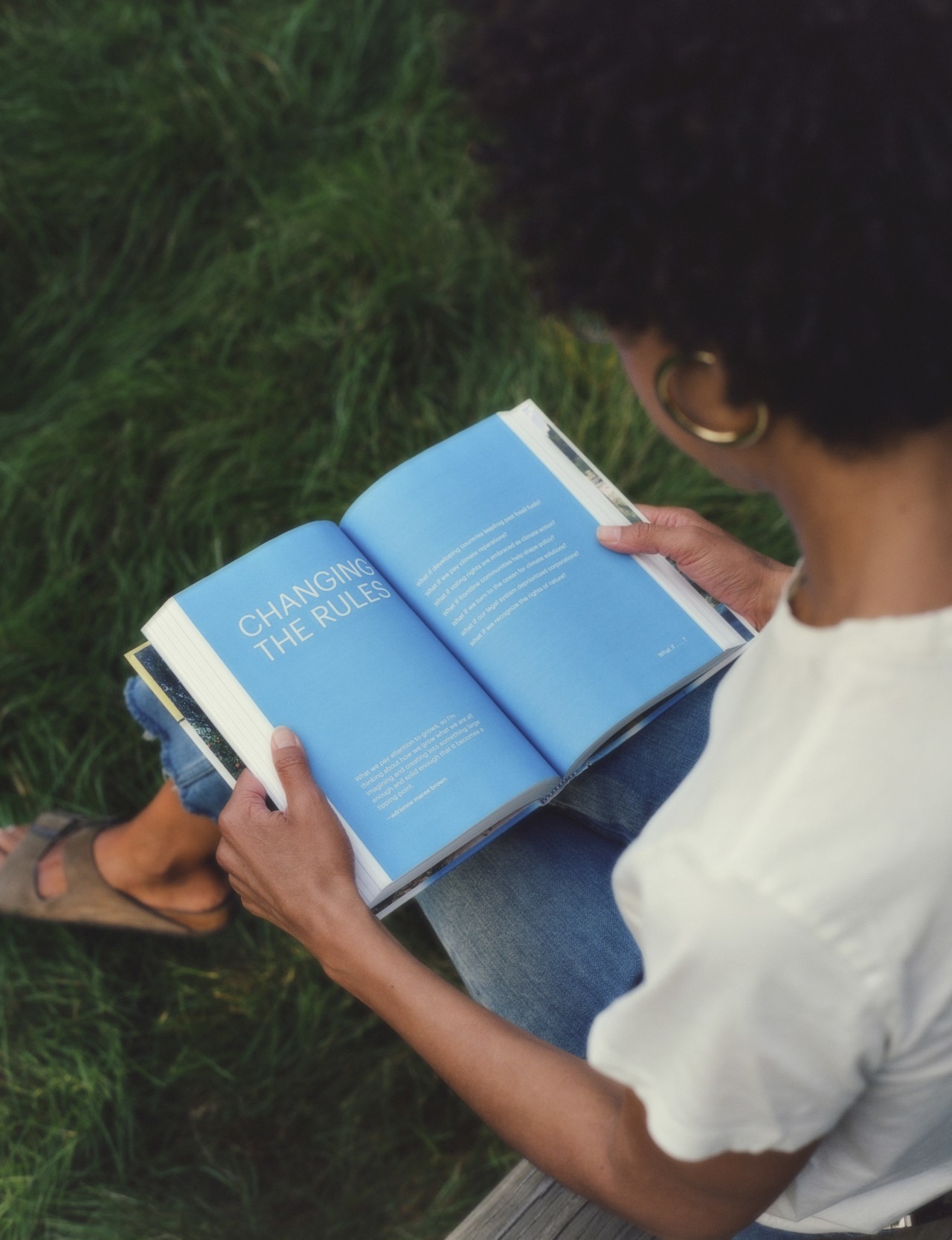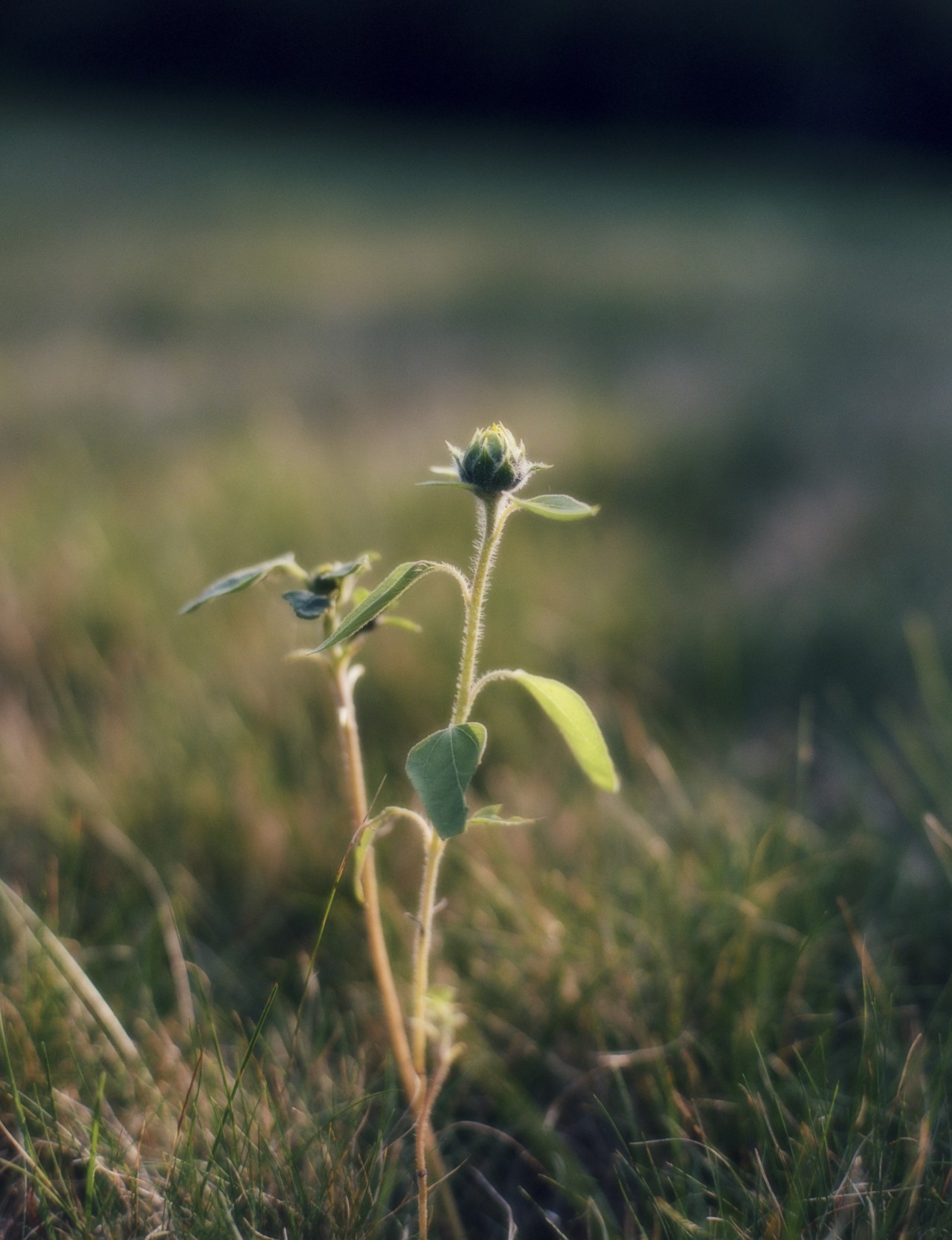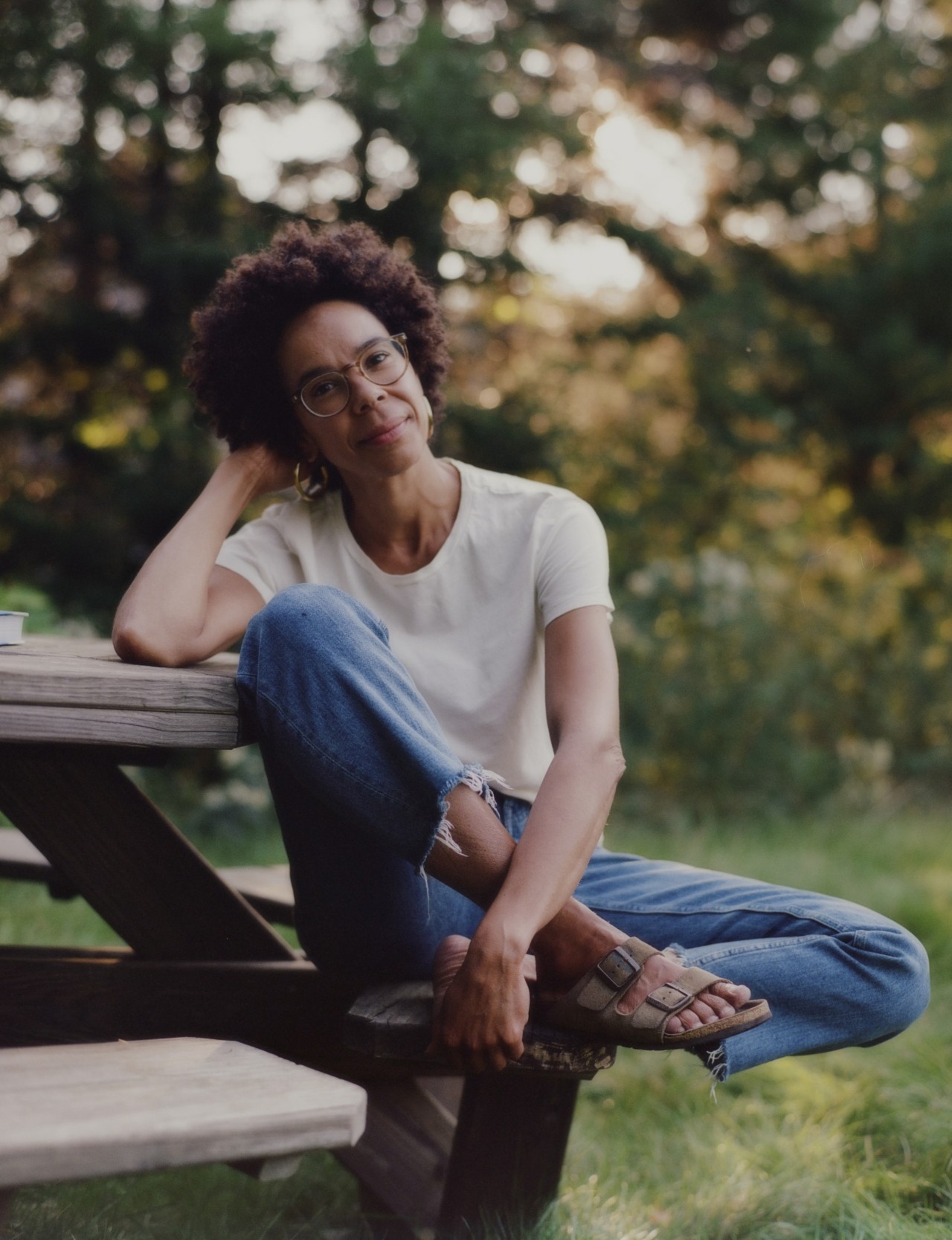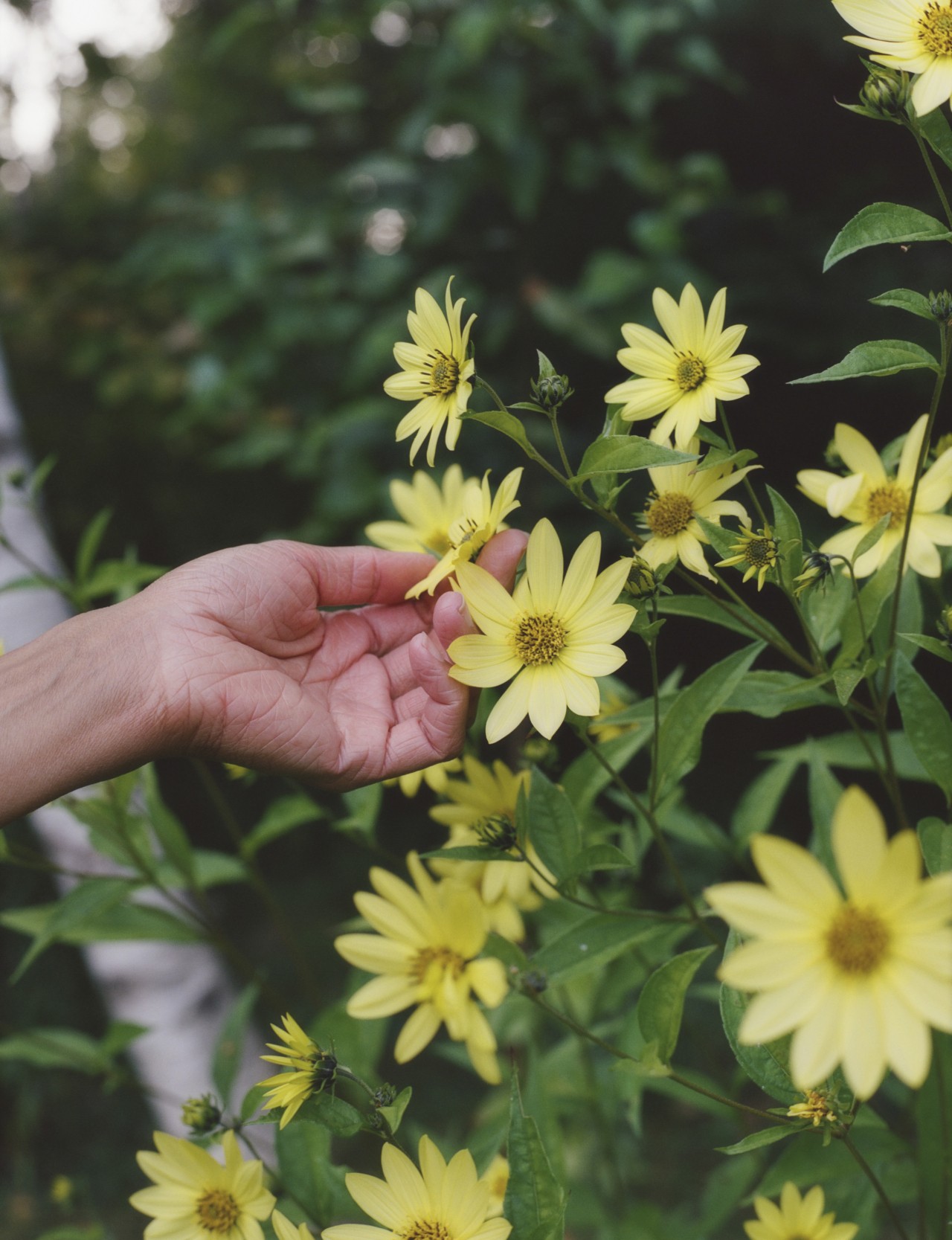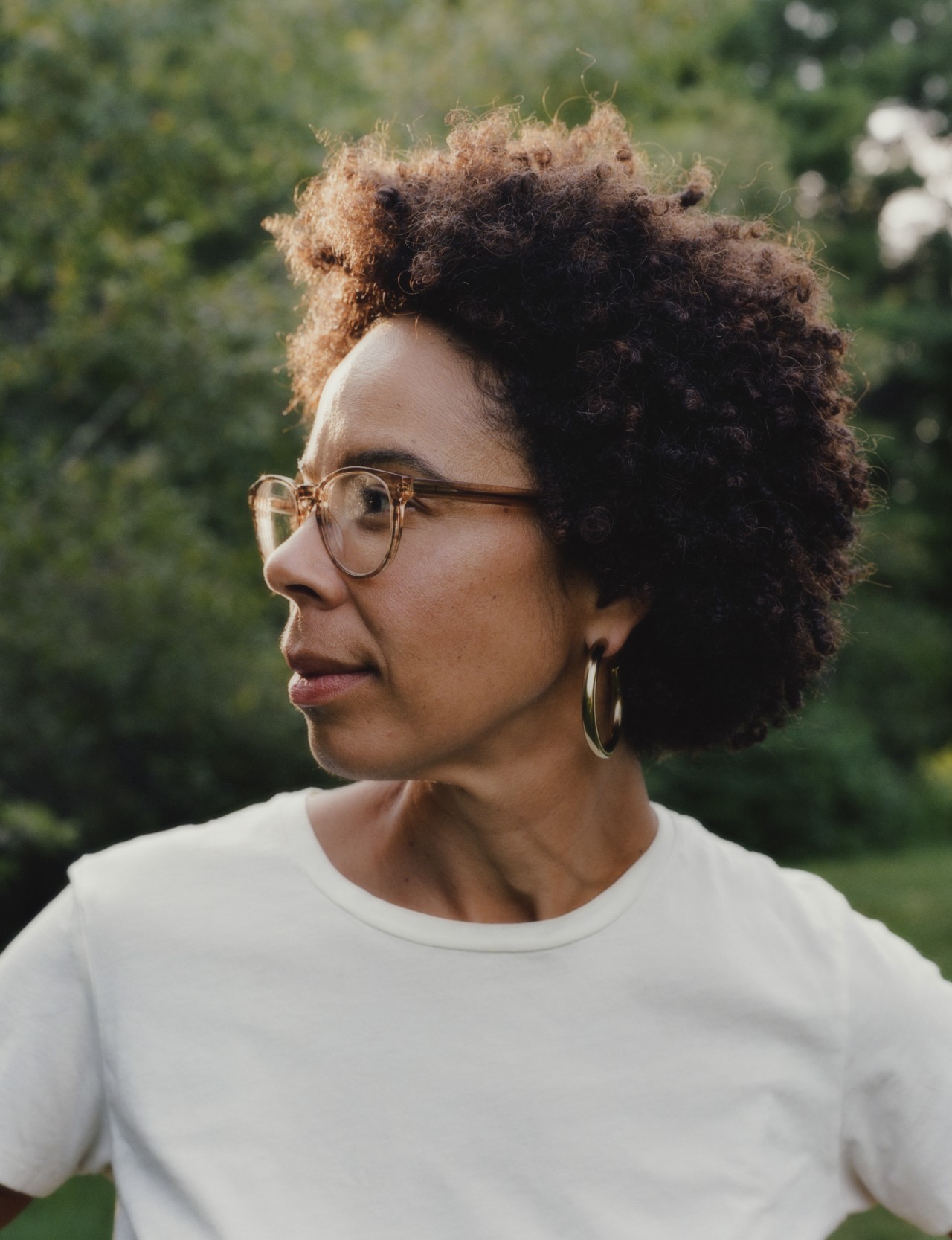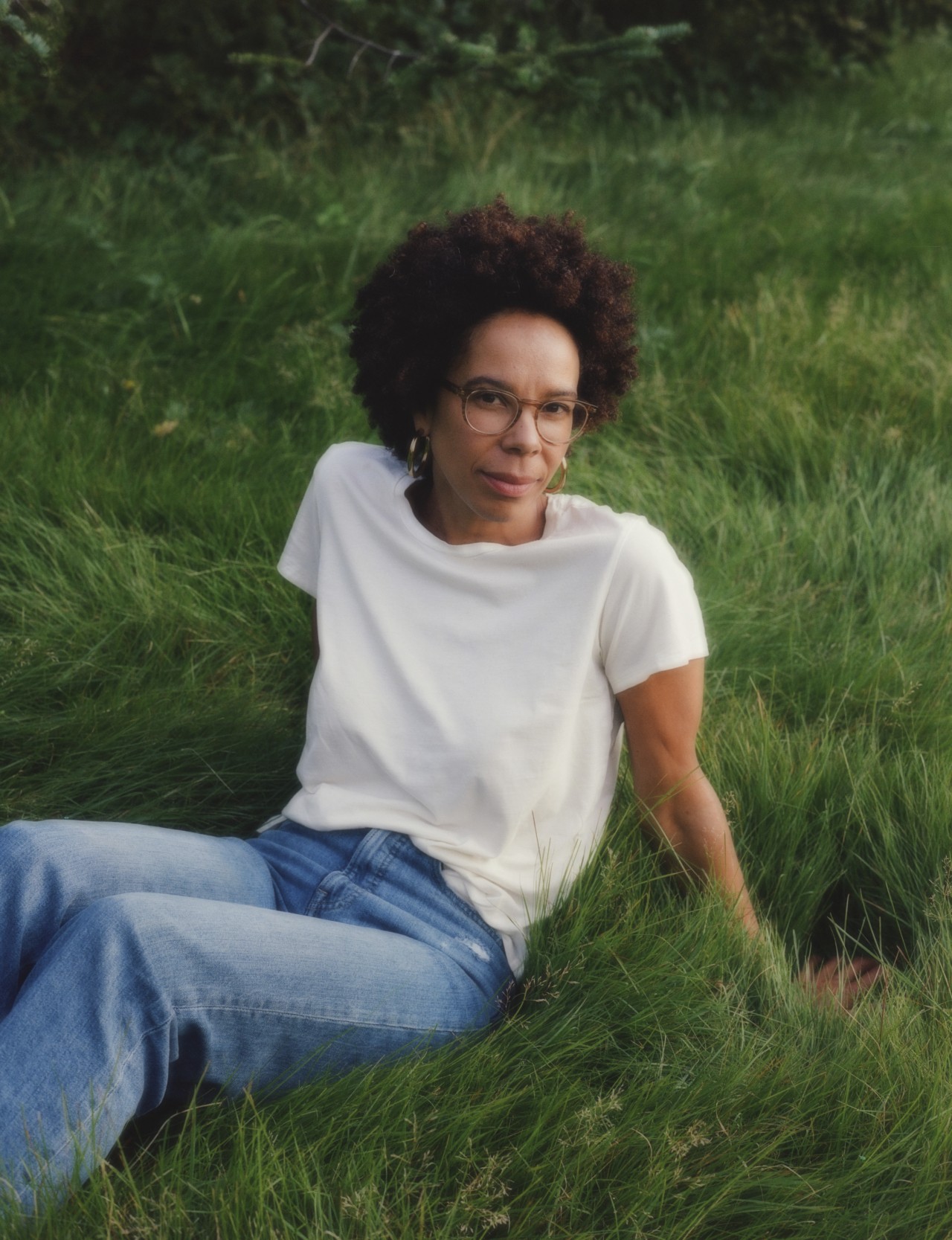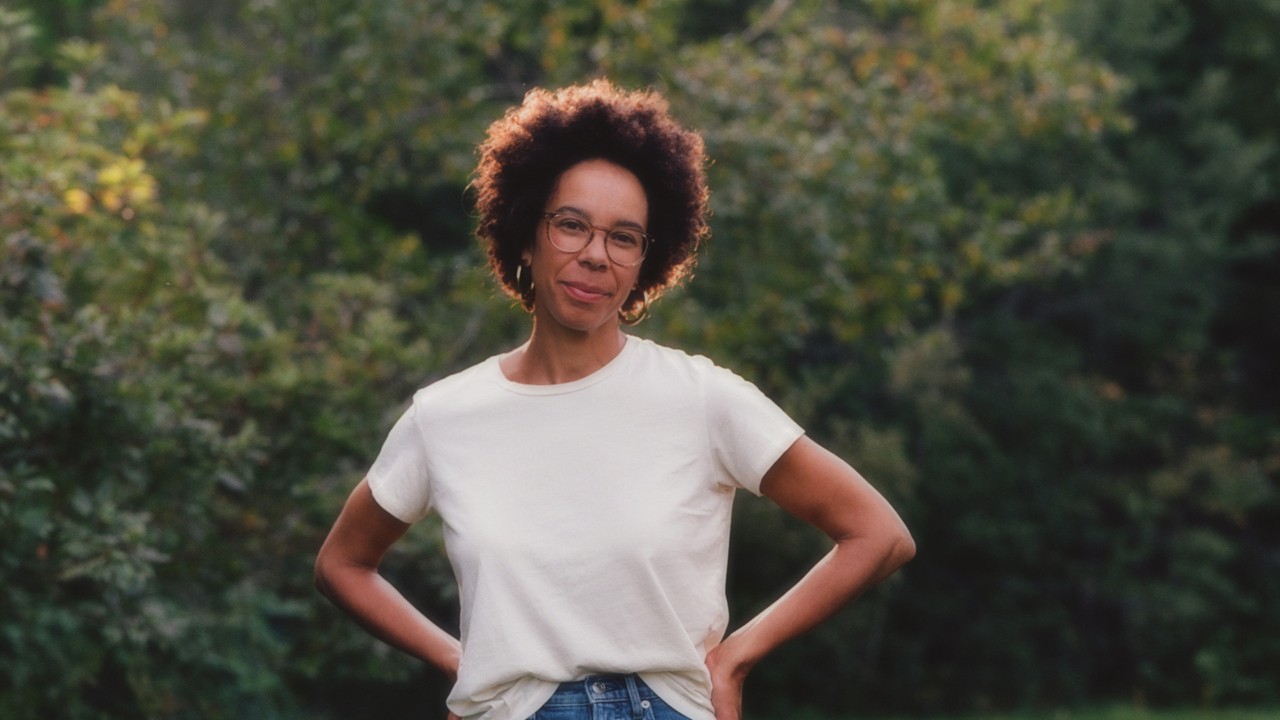
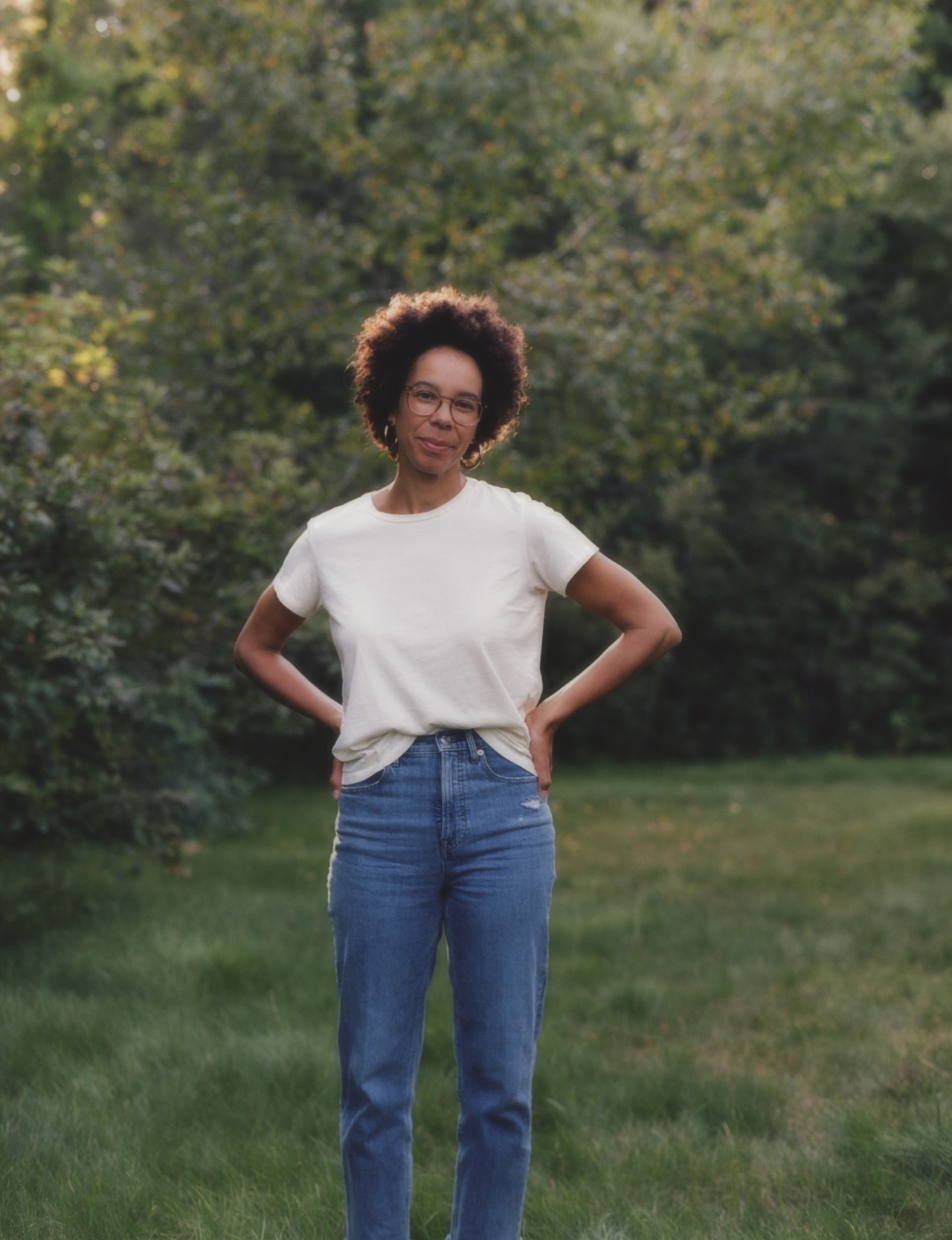
Words by Daphne Chouliaraki Milner
photographs by julia kokernak
It’s not uncommon to see the permacrises we face reflected back to us on television, in films, or on the pages of books. A number of blockbuster movies that imagine climate collapse have hit the silver screen in recent years, while many media platforms publish apocalyptic headlines about our climate future almost daily. Rightly so. Less frequent, however, are the stories showing us a future where climate solutions actually worked; stories that depict a world of renewable energy, clean water, green buildings, and restored ecosystems; stories that crystallize exactly what we have to gain from collective climate action.
It’s why the title of Ayana Elizabeth Johnson’s newly released book asks one seemingly simple question: What If We Get It Right? In the book, Johnson brings together perspectives from experts across fields—science, activism, art, poetry—to paint a picture of our possible climate futures. Futures that are built on successful solutions. “Addressing the climate crisis requires… a rethinking of the fundamental systems that we rely on,” Johnson tells Atmos. “This book was really an attempt to…show [us] it’s worth it.”
Below, Johnson speaks with Atmos about thinking beyond catastrophe, why cultural change is just as essential to climate action as policy, and what it will take to envision and build a society transformed for the better.


Daphne
What inspired you to write What If We Get It Right?
Ayana
The most honest answer is that I needed help answering that question. There are so many movies, media, and news stories about us getting it wrong; about climate disasters, apocalypses, and all of the terrifying scientific projections contingent on us not changing our ways and stopping our reliance on fossil fuels. I was like, “What if we actually deploy all the solutions we already have? What would that look like?” I’m not a fiction writer, I’m not a futurist, sci-fi person, I’m not a filmmaker. I realized the best way for me to approach answering that question was to talk to all the people who have helped me see the way forward. That’s why the book became an anthology of sorts.
After I came up with the premise for the book, I was totally intimidated by my own question and realized that no one person really can answer it. This is a moment that calls for very deep collective wisdom.
Daphne
In What If We Get It Right?, you remind us that our climate future is not yet written. How do you find balancing both acknowledging the severity and urgency of the climate crisis with fostering a sense of hope and possibility?
Ayana
I’m not one to sugarcoat anything. It’s important that you understand the risks and mistakes in order to think about solutions. This book does not ignore all of the horrors that are unfolding and may lie ahead. What it does do is explore how we can face reality and build the best possible future.
There are two ways I balance acknowledging the urgency of the climate crisis with hope. One is by writing a chapter in the beginning, “Reality Check,” that lays out all of the worst news in three pages. I don’t dwell on it for the rest of the book, but of course, as I’m doing interviews, as I’m writing my own essays in the book, we’re acknowledging and grappling with the situation we find ourselves in. And so the way forward—getting it right—involves responding to those realities, while also being very clear about the fact that the future is not yet written. That means there is a wide range of possible futures, and I guess the less catchy, more accurate title for the book would be, “What If We Get It As Right As Possible?”
There’s no time machine that can transport us to an era before we built an entire economy based on fossil fuels and before we became so reckless with ecosystems and the magic of photosynthesis. But we still have a lot of ability to shape the future that we have.

“What we aspire to, as a species, is shaped by culture and the stories we tell ourselves and each other.”
Daphne
Your book includes essays informed by data, poetry, and art. How do you see these different forms of expression working together to convey the complex situation we find ourselves in?
Ayana
I think the way you framed that question is the answer. Science clearly isn’t enough, we’ve had very robust climate science for decades. Poetry, also, isn’t enough—as much as I adore poetry. For me, this was about creating a climate book that doesn’t feel like a textbook. Instead, how do we make the climate part of the cultural conversation as opposed to a technical or a policy or emotional conversation? How are we really embedding [our response to] this crisis in how we collectively want to be humans on this planet together? And in what ways do we need to transform society, economies, and cultures to make meaningful change?
I think we don’t talk enough about the future that we want to build together. We talk a lot about avoiding certain possibilities, but not nearly enough about what we want to create. It’s really hard to think about the future, especially when the problems of now are so big and complicated. And so, this book was really a delightful creative experiment to see what I could muster in myself and what I could curate along those lines. My hope is that this title-question inspires many answers, iterations, and conversations; it’s a spark as opposed to a definitive answer. In this way, What If We Get It Right? is a sampling of the community around me.
Daphne
And why do you think it’s so important for the climate crisis to become a more established part of the cultural conversation? How can that help catalyze our quest for solutions?
Ayana
Culture is the status quo. Culture shapes what is considered the norm, what is considered desirable, and what is considered aspirational. What we aspire to, as a species, is shaped by culture and the stories we tell ourselves and each other. Culture also determines what policies are possible. It determines whether or not we value mangroves and wetlands, and whether or not we think of clean air and clean water as a fundamental right. It determines how we think about the rights of nature, and how we think about solutions and collective action. It determines how we think about consumerism, disposability, and our transportation systems.
All these are expectations that we set together for each other, for our government, for our corporations, and for our societies as a whole. So, we can collectively raise the bar in culture for what sustainability means—for lack of a better word. That is the seed from which a lot of beautiful things can sprout. The book is a reminder that we need people who are artists, writers, poets, and filmmakers. We need them to inspire us to put in the work that it’s going to take to get there.


Daphne
In the book you encourage readers to imagine life on the other side of the climate crisis. Can you share some of the most compelling visions of a post-crisis world that you explore in your book?
Ayana
I was talking with my mother last night about the final interview in the book. It is with Bren Smith, a commercial fisherman who is now a regenerative ocean farmer focused on growing seaweeds and oysters that help restore ocean life through photosynthesis and filter feeding as well as providing food that has an incredibly low impact to people. He cofounded the organization, GreenWave, which is training thousands of people to become regenerative ocean farmers.
The way that he talks about blue collar environmentalism is with a creative, practical, problem-solving approach to the challenges that we’re facing in the world. He also talks about how there’s an opportunity to heal the political divide by not even talking about the problem, but rather facing the realities of the world and figuring out what to do as people who work in and with nature. The water and the weather patterns are changing, so how do we continue to make a living when the lobster are moving north or when the fish populations are depleted? I really appreciate that grounded, practical approach of like, “Okay, but like what are we going to actually do?”
Bren has a very practical and also a very heartwarming approach, which is very aligned with one of the messages that I’m putting forward in the book. Namely, that we can’t control the outcome and that we—in some ways—also shouldn’t worry about it. We should just do our part even if everything doesn’t work out the way that we would want it to and even if we don’t fully get it right. The way he puts it is: “All I want is to be on my boat and have that pride of working with the water and working with people in my community, shoulder to shoulder, to try to build a more beautiful and better place. And what I say to myself is, It’s okay if it doesn’t work out, it was still a day worth living.”

“It’s not when we get it right, it’s not how we get it right, it’s not getting it right—it’s what if?”
Daphne
Building on that, the title of your book is framed through a hopeful lens: What if we get it right? Drawing on all the conversations that you’ve had while working on the book, what would you say getting it right looks like to you?
Ayana
There’s a chapter in the book that’s called, “A Note on Hope,” that I felt was necessary because, when people see my work or read my writing, they assume that I’m hopeful and that I’m an optimist. Both are actually not true. Both of those words, by definition, include some expectation that it’s going to be okay in the end. I’m a scientist and I’m a realist, so I know that this could be terrible.
Sometimes, hope is frustrating because it’s as if people are waiting to feel hopeful or optimistic before doing anything. Instead of, “Show me that it’s worth it,” it’s like, “Show me that it’s all going to be fine, and then I’ll pitch in.” That mindset is just not going to help. It reminds me of a brief conversation I had with writer and philosopher Terry Tempest Williams where we somehow converged on this distaste for the popularity of hope. What she said to me was: “I wish people would make their vows to something deeper than hope.”
To answer both your question and my own question, if not hope, then what? Truth, courage, and solutions—all of which are the subtitles of, All We Can Save, a book I wrote with Katharine Wilkinson. The answer is also love, collaboration, community, and possibility. The point I want to leave you with is that the title has a question mark at the end of it. It’s not when we get it right, it’s not how we get it right, it’s not getting it right—it’s what if? At the very least, I hope we’ll all ask ourselves and each other that question and really think about what our answers might be.
Editor’s Note: This interview has been condensed and edited for purposes of length and clarity.
A Glimpse of the Future if We Get Climate Action Right
